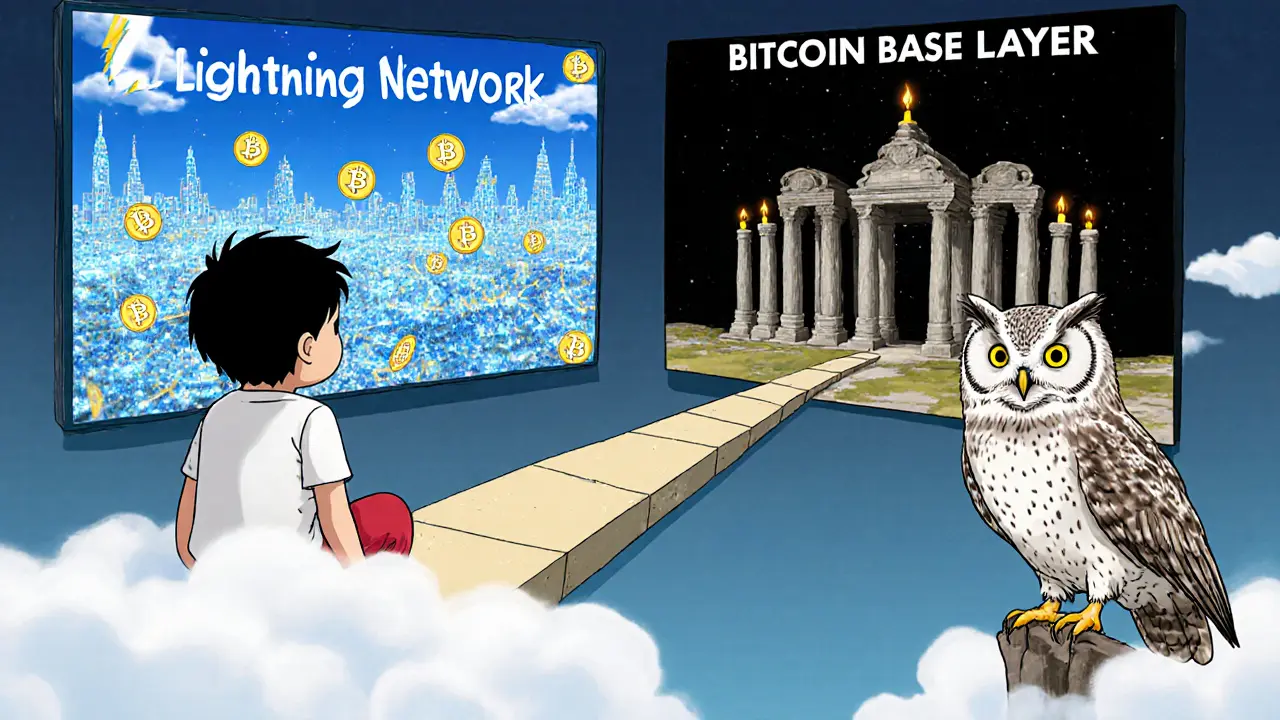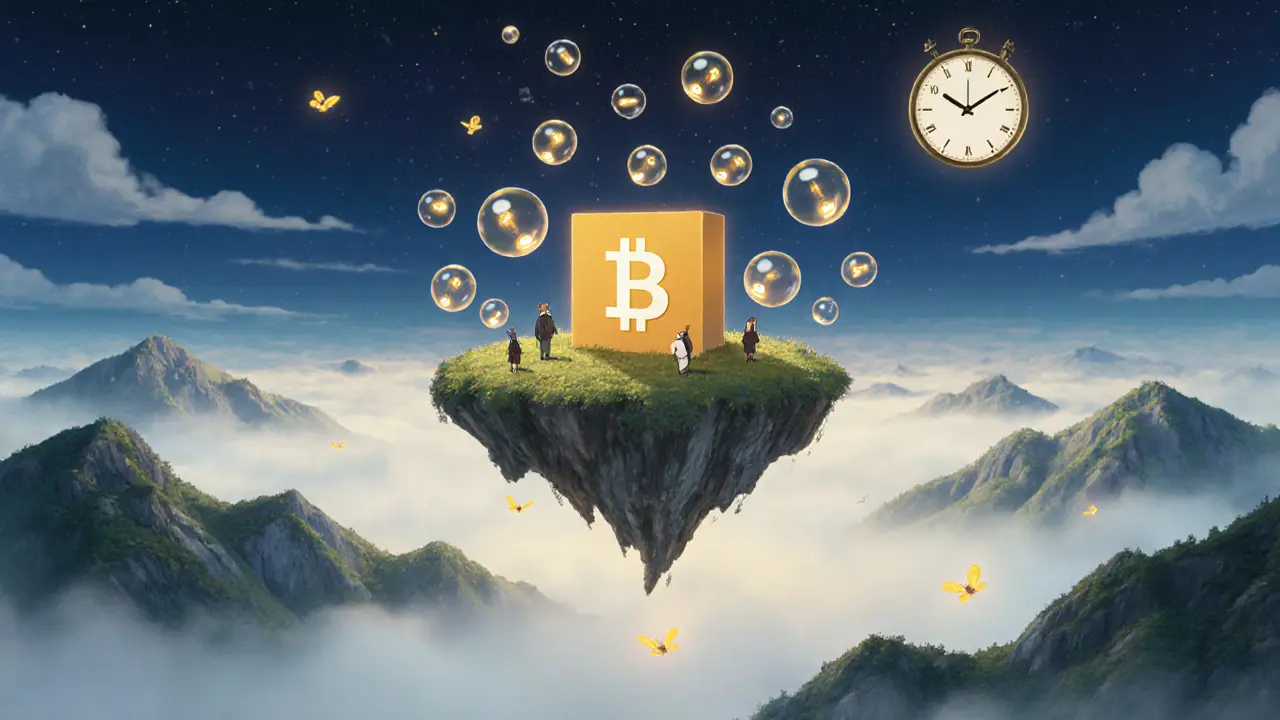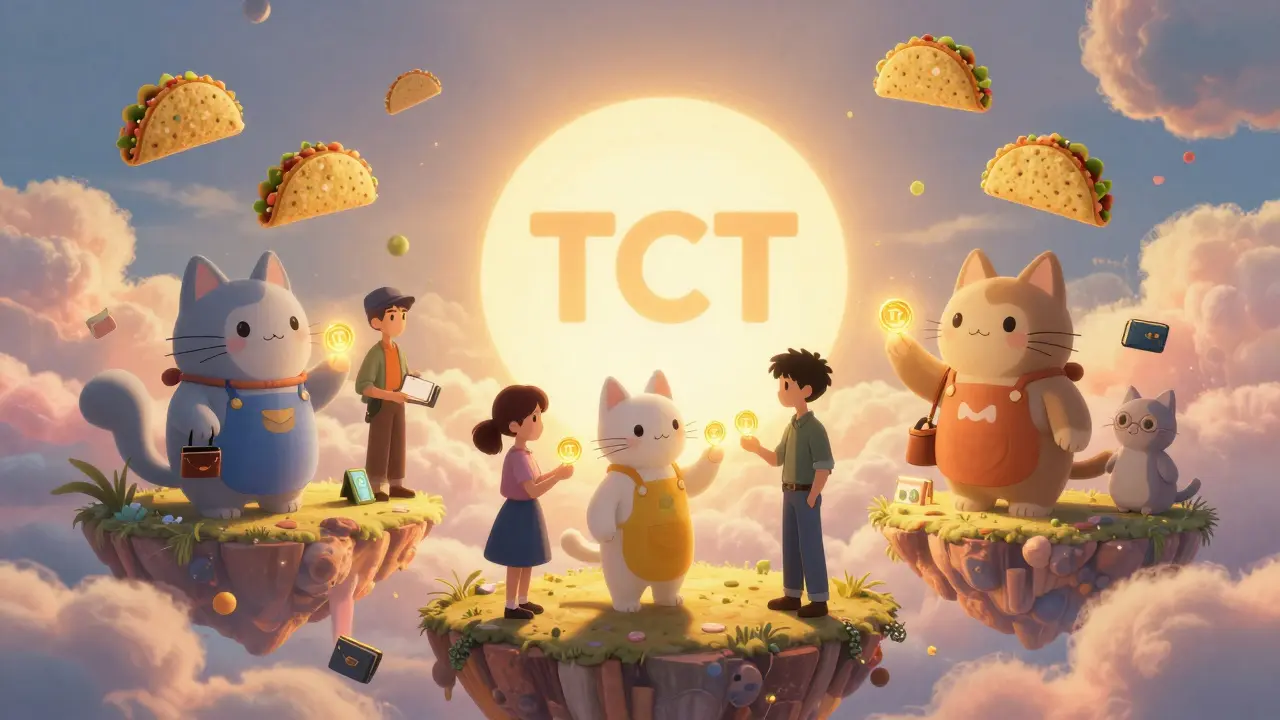Bitcoin Transaction Speed Calculator
Calculate Transaction Confirmation Time
Estimate how long your Bitcoin transaction will take to confirm based on current network conditions.
Enter a fee amount to see estimated confirmation time
How This Works
Bitcoin processes about 4,000 transactions per block with a 10-minute block time. Higher fees get prioritized by miners. Your transaction waits in the queue until it's included in a block.
Ever wondered why your Bitcoin transaction takes 10 minutes-or sometimes an hour-to confirm? It’s not a glitch. It’s by design. The block time is the heartbeat of any blockchain, and it directly controls how fast your transactions get processed. In Bitcoin, that heartbeat ticks every 10 minutes. That’s not arbitrary. It’s a calculated trade-off between speed, security, and decentralization-and understanding it changes how you use crypto altogether.
What Block Time Really Means
Block time is the average time it takes for miners to solve a cryptographic puzzle and add a new block of transactions to the blockchain. Think of it like a bus schedule: every 10 minutes, a new bus (block) pulls into the station with a fixed number of passengers (transactions). If you’re waiting for the bus, you’re waiting for your transaction to be included in the next block. Bitcoin’s 10-minute block time was chosen by Satoshi Nakamoto not because it’s the fastest possible, but because it’s the sweet spot for a global, decentralized network. It gives nodes enough time to spread new blocks across the world before the next one is mined. If blocks came too fast, miners in Japan and Brazil would be working on outdated versions of the ledger, causing forks and wasted work. Too slow, and users get impatient. Ten minutes strikes a balance.How Block Time Limits Transaction Speed
Here’s the math: Bitcoin’s block size is capped at 1 MB. Each transaction averages about 250 bytes. That means one block can fit roughly 4,000 transactions. At 10 minutes per block, that’s about 7 transactions per second. Compare that to Visa, which handles up to 65,000 transactions per second. Bitcoin isn’t built for speed-it’s built for security. This limit creates a bottleneck. When demand spikes-say, during a price surge or a popular NFT drop-transactions pile up. Miners prioritize transactions with the highest fees. If you pay 50 cents, your transaction might wait hours. Pay $5, and it’s likely in the next block. You’re not paying for faster processing-you’re paying to jump the queue.The Trade-Off: Speed vs. Security
Other blockchains tried going faster. Litecoin, for example, uses a 2.5-minute block time. Dogecoin does 1 minute. These networks confirm transactions quicker, but they pay a price. Shorter block times increase the chance of orphaned blocks-when two miners solve a block almost simultaneously, and one gets rejected. Orphaned blocks mean wasted mining power and potential instability. Worse, faster blocks require more bandwidth and computing power from nodes. That pushes smaller operators out. Over time, only big mining pools or data centers can keep up. That’s centralization-and it undermines the whole point of blockchain. Bitcoin’s 10-minute block time helps keep the network distributed. Even a low-end Raspberry Pi can run a full node. That’s not true for chains with 10-second block times.
Why Confirmation Counts Matter
Even after your transaction is included in a block, it’s not final. Most exchanges and wallets wait for multiple confirmations before considering a transaction secure. One confirmation means your transaction is in one block. Six confirmations mean six blocks have been added on top of yours. That’s about an hour. Why six? Because after six blocks, it becomes statistically near-impossible to reverse your transaction without controlling more than half the network’s mining power-an attack so costly it’s practically impossible. For small purchases, like buying coffee with Bitcoin, one confirmation might be enough. For a $10,000 transfer? Six is standard. The block time sets the clock for all of this.Real-World Impact: Frustration and Workarounds
Users on Reddit and crypto forums often complain about slow Bitcoin transactions. They’re used to instant payments via PayPal or Apple Pay. Waiting 20 minutes for a transfer feels broken. But the frustration isn’t with the tech-it’s with mismatched expectations. The real solution isn’t speeding up Bitcoin. It’s layering on faster systems on top. The Lightning Network is the most successful example. It lets users open payment channels off-chain and send dozens of microtransactions in seconds. Only the final balance gets settled on Bitcoin’s blockchain. That’s how services like Strike and Cash App offer near-instant Bitcoin payments without changing the base layer. Other networks like Solana or Polygon offer faster speeds, but they’re centralized in different ways. Solana has had outages. Polygon relies on trusted validators. Bitcoin doesn’t. You’re choosing between speed and resilience.
What This Means for You
If you’re using Bitcoin to store value, the 10-minute block time is a feature, not a bug. It gives you confidence that your holdings are secure, irreversible, and resistant to manipulation. If you’re using it to pay for groceries, it’s the wrong tool. That’s why the industry has split: Bitcoin as digital gold, other chains and Layer 2s as digital cash. For everyday use, always check the fee estimator in your wallet. Don’t pick ‘low’ if you need it confirmed quickly. Use ‘standard’ or ‘priority’-they’re not magic, they’re just higher bids in the queue. And if you’re building an app that accepts Bitcoin, build in a waiting screen. Tell users: ‘Your transaction will confirm in 5-30 minutes.’ Set expectations. Don’t let them think it’s broken.Future Outlook: No Changes Coming
Despite pressure, Bitcoin’s core team has no plans to change the 10-minute block time. The community consensus is clear: don’t touch the foundation. Scaling happens above it. The Lightning Network, sidechains, and other Layer 2s are the future-not faster blocks. Newer blockchains may offer speed, but none have matched Bitcoin’s 15-year uptime without a single major security breach. That’s not luck. It’s the result of deliberate, conservative design. Block time isn’t just a number. It’s a philosophy.Why does Bitcoin take 10 minutes to confirm a transaction?
Bitcoin’s 10-minute block time is a deliberate design choice to balance security, decentralization, and network stability. It gives miners and nodes enough time to propagate new blocks across the globe before the next one is mined, reducing the risk of forks. This interval also helps maintain a predictable, tamper-resistant ledger by making it harder for malicious actors to rewrite history.
Can I make my Bitcoin transaction confirm faster?
Yes, but only by paying a higher fee. Miners prioritize transactions with the highest fees per byte. Most wallets offer fee options like ‘low,’ ‘standard,’ or ‘priority.’ Choosing ‘priority’ increases your chances of being included in the next block. There’s no way to bypass the block time itself-your transaction must wait for the next available block.
How many confirmations do I need for a Bitcoin transaction to be safe?
For small transactions under $100, one confirmation is often enough. For larger transfers, six confirmations (about one hour) is the industry standard. Each confirmation adds another block on top of yours, making it exponentially harder to reverse. After six, the probability of a successful double-spend attack drops below 0.0001%.
Why don’t other blockchains use 10-minute block times?
Other blockchains prioritize speed over decentralization. Networks like Solana (400ms) or Polygon (2s) use faster block times to support high-frequency trading and gaming. But this requires more powerful hardware, centralized validators, or trusted nodes-sacrificing Bitcoin’s permissionless, peer-to-peer model. Bitcoin’s slower pace is a feature for those who value security above all else.
Is the Lightning Network faster than Bitcoin’s base layer?
Yes, dramatically. The Lightning Network moves transactions off-chain through payment channels. Payments happen instantly, with fees fractions of a cent. Only the opening and closing of channels are recorded on Bitcoin’s blockchain. This lets users enjoy Bitcoin’s security without its speed limits-making it ideal for everyday spending, tips, and micropayments.
Will Bitcoin ever reduce its block time to improve speed?
No. The Bitcoin community has consistently rejected changes to the 10-minute block time. Altering it would risk network stability, increase orphaned blocks, and push smaller nodes out of the network. Instead, scaling solutions like the Lightning Network and sidechains are being developed to handle speed-critical use cases-without compromising Bitcoin’s core security model.







vinay kumar
November 23, 2025 AT 09:41Block time ain't broken it's just not for your coffee run
Melina Lane
November 24, 2025 AT 04:26This is such a clear breakdown! I used to think Bitcoin was slow until I realized it's actually the most reliable digital asset out there. Seriously, think about it-15 years without a single major hack. That's not luck, that's engineering magic. 🙌
andrew casey
November 24, 2025 AT 06:20One cannot help but observe the profound philosophical underpinnings of Bitcoin's design paradigm. The 10-minute interval is not merely a technical parameter-it is a metaphysical assertion of sovereignty over chaos. To demand faster confirmation is to impose the tyranny of immediacy upon the sacred architecture of decentralization. One must ask: Are we engineers-or mere consumers of convenience?
Abhishek Anand
November 25, 2025 AT 16:57Let’s be real-people who complain about Bitcoin’s block time are the same folks who think ‘decentralized’ means ‘no one’s in charge’ and then get mad when the system doesn’t cater to their 3 AM impulse buy. Block time isn’t a bug, it’s a feature of a system designed to survive nuclear war, not to compete with Venmo. Litecoin’s 2.5-minute blocks? Sure, faster-but also more orphaned blocks, more centralization pressure, and a network that’s one bad miner cartel away from becoming a private database. Bitcoin’s slowness is its armor.
And let’s not forget: the real innovation isn’t in the base layer. It’s in Layer 2. Lightning Network doesn’t break Bitcoin’s rules-it works within them. You open a channel, send 500 microtransactions in 2 seconds, then settle the final balance on-chain once. No one’s waiting for a block. No one’s paying $5 in fees to send $2. That’s how you scale without sacrificing security. It’s like having a private highway that only connects to the interstate at the beginning and end. The interstate? Still slow. But your daily commute? Instant.
And yes, if you’re using Bitcoin to pay for groceries, you’re using the wrong tool. Bitcoin is digital gold. Lightning is digital cash. Stop trying to make one do the job of the other. The market’s already figured this out. Cash App, Strike, Wallet of Satoshi-they’re all Lightning. Bitcoin’s base layer? Holding the bag. And that’s exactly how it should be.
Meanwhile, Solana’s down again because their validators got too greedy. Polygon’s trust model? One centralized node away from a 51% attack. Bitcoin? Still running on a Raspberry Pi in someone’s basement in rural Nigeria. That’s the difference between a hype chain and a civilization-scale protocol.
And don’t even get me started on people who think ‘just increase the block size.’ No. You don’t fix a slow heartbeat by making the heart beat faster-you fix it by building better arteries. That’s what Layer 2 is. The base layer stays sacred. The rest? Build on top. That’s the genius.
And if you’re still mad about 10 minutes? Go use Monero. Or Dogecoin. Or Ethereum. But don’t cry about Bitcoin being ‘too slow’ when it’s the only one that’s still standing after every crypto winter. That’s not coincidence. That’s design.
Lani Manalansan
November 27, 2025 AT 07:22I love how this post ties together the technical and the cultural. In the U.S., we're trained to expect instant everything-Amazon Prime, same-day delivery, TikTok videos that load in a second. But blockchain isn't about speed. It's about trust without a middleman. And that takes time. I think of it like a traditional bank vault: you don't rush the lock. You let it settle. Bitcoin's 10-minute block is like that vault closing slowly, securely, and with intention. It's not broken-it's beautifully deliberate.
And the Lightning Network? That’s the future. It’s like having a personal ATM inside your house, but the money still comes from the central bank. You get speed where you need it, and security where it matters. Brilliant design.
Frank Verhelst
November 27, 2025 AT 21:43YES YES YES 🙌 I’ve been saying this for years! Bitcoin isn’t meant to be your daily driver-it’s your savings account. Use Lightning for spending. Use Bitcoin for holding. It’s not either/or-it’s both. And if your wallet doesn’t show you a ‘waiting’ screen? That’s a UX failure, not a blockchain failure. 🚀
Roshan Varghese
November 28, 2025 AT 05:53lol 10 mins? more like 10 mins of government controlled mining pools pretending to be decentralized. you think this is secure? nah. they just make it look slow so you dont notice the real control. theyre using the block time as a distraction. the real power is in the mining rigs owned by 3 companies in china and georgia. dont be fooled. this whole thing is a scam. and lightning network? its just a way for big banks to sneak in through the backdoor. i know what im talking about. i read the whitepaper 17 times. its rigged.
Dexter Guarujá
November 28, 2025 AT 10:03Let me be clear: America built the internet. America built the first blockchain. America runs 70% of Bitcoin’s mining. And now we have people from countries with 30-year-old infrastructure complaining that Bitcoin is ‘too slow’? You want speed? Build your own chain. Don’t ask the most secure, most battle-tested financial system in human history to bend to your impatience. Bitcoin’s block time is a symbol of American resilience. Don’t break it.
Jennifer Corley
November 29, 2025 AT 02:18Interesting how you frame Bitcoin as ‘secure’ while ignoring that its energy consumption is equivalent to a small country. And yet you dismiss Solana’s outages as ‘centralized’-but what about Bitcoin’s centralization in ASIC manufacturing? China, U.S., and Kazakhstan control 80% of the hash rate. You’re romanticizing a system that’s just as centralized, just slower. And you call Lightning Network a ‘solution’? It’s a layer of complexity that only the technically privileged can use. Most people just want to send money. Not a philosophy lecture.
Natalie Reichstein
November 30, 2025 AT 14:06People who don’t understand block time should never be allowed to hold crypto. If you think 10 minutes is slow, you’ve never lived through a 2017 bull run where transactions took 12 hours. This isn’t a flaw-it’s a filter. The people who stick around? They get it. The rest? They move on to the next meme coin. And honestly? Good riddance.
Kaitlyn Boone
December 1, 2025 AT 14:03block time is just a way to make you pay more fees. its not about security its about profit. miners make more money when transactions take longer. they want you to wait. they dont care about decentralization. they just want your money. and lightning? its just a way for them to charge again on the second layer. its all a scam. the whole thing is rigged. i know because i used to work in mining
James Edwin
December 2, 2025 AT 22:03I’ve been running a full node for three years. I’ve watched blocks propagate across continents. I’ve seen how a 10-minute window lets a node in Tokyo sync with one in Brazil before the next block even starts. That’s not slow-that’s elegant. And the fact that a $35 Raspberry Pi can still validate the entire chain? That’s the real miracle. No other network does that. We should be proud of that slowness. It’s the price of freedom.
Kris Young
December 2, 2025 AT 23:14I agree with the post. Bitcoin's block time is designed for stability. Faster blocks mean more orphaned blocks. More orphaned blocks mean wasted energy. Wasted energy means higher costs. Higher costs mean fewer people can run nodes. Fewer nodes mean less decentralization. Less decentralization means less security. So, the 10-minute block time is not slow. It is the most efficient way to maintain security and decentralization. It is a balanced system.
LaTanya Orr
December 3, 2025 AT 23:58There’s something poetic about waiting. In a world that demands instant everything, Bitcoin asks us to slow down. To trust time. To trust a system that doesn’t rush. I think that’s why it resonates with so many of us-not because we want to be rich, but because we’re tired of being rushed. The 10-minute block isn’t a delay. It’s a meditation. It’s a reminder that some things are worth waiting for.
Ashley Finlert
December 4, 2025 AT 12:04The 10-minute block time is not merely a technical specification-it is the crystallization of a cultural ethos. A quiet rebellion against the tyranny of immediacy. While the world fractures into fleeting attention spans and algorithmic urgency, Bitcoin stands as a monolith of patience, its cadence echoing the heartbeat of a civilization that values permanence over novelty. To deride its slowness is to misunderstand its soul. It is not a payment processor-it is a covenant. A promise that some things, once written, shall not be erased. And in that stillness, in that deliberate, unhurried rhythm, lies its immortality.